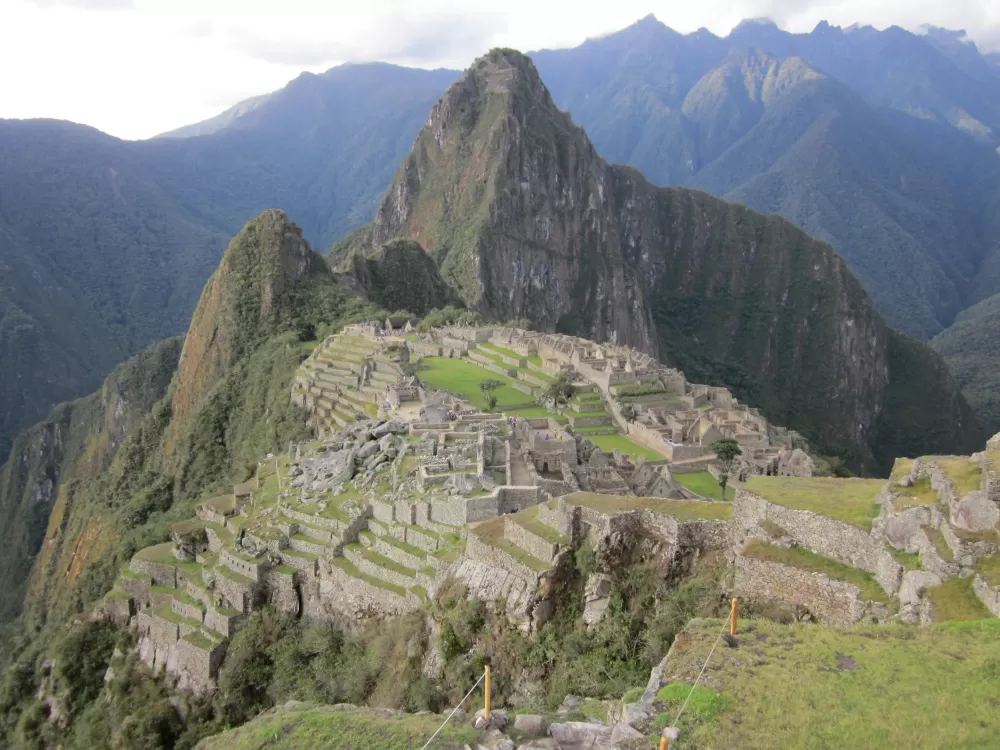Amazon to Andes- Exploring Peru

My husband and I had an incredible journey from deep in the jungle in Manu National Park to the breathtaking Machu Picchu. We explored the amazing city and countryside cultures of Cusco and the many varieties of birds and other wildlife that live in the Amazon jungles. Beautiful views seen through the many variations of transportation and campsites. We had a truly magical trip.
All Photos
Photo Album
Is this real life?
Oct 12, 2012

Eventually, we recognized our flight number being called and boarded a bus that took us to our plane. The plane was really nice (MUCH nicer than our international flight) and they served us another cold breakfast during the flight. When we arrived in Cusco, we were met by our driver and taken to our hotel - Hotel Taypikala - where we were checked in and helped to our room on the third floor. With no elevator, we were able to feel the altitude on our way up the stairs, and Kepler was grateful for the free coca tea in the lobby.
The hotel was nice and the staff was very friendly. We wanted to set right out to explore the area, but sat down the bed and ended up passing out for a few hours instead. We were glad we did when we woke up an hour into our nap to a big rain/hail storm. We felt a lot less guilty just staying inside and resting!
When the weather cleared, we got directions from the front desk and set out on our own to explore. We walked to the Plaza de Armas and took a ton of photos of the beautiful buildings along the way. We ran into a little parade, saw beautiful churches, did some people watching , went to an ATM, bought water and snacks and then returned to the hotel just in time to meet the guides from Manu who came to the hotel to brief us on our amazon trip. They described the next 6 days to us so we would know what to expect and how to prepare. Afterwards, we went down to the hotel restaurant for dinner. I had alpaca and Kepler had a local typical beef dish. Mine was pretty dry, but Kepler's was delicious! We went back to our room and packed our bags for Manu before settling into bed nice and early.
- Photos (381)
- Erin Correia
- History, Peru, Traveler Stories, Staff Blog, Amazon, Rainforest Alliance, Trekking & Hiking, Light Hiking
- Is this real life?
- The long and winding road
- Finally, monkeys!
- 'Good luck! Emperor Monkeys!'
- The heat catches up....
- Things that go bump in the night
- Buses, Taxis, Boats and Planes!
- The Valley of the Incas
- MACHU PICCHU!
- Huayna Picchu! A View from Above
- Aliens Exist?
- Ceviche, Pisco and Museums, Oh my!
- Off to Peru!




















